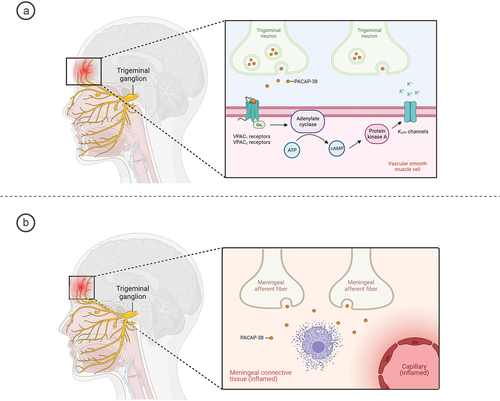Figures & data
Table 1. Competitive environment for PACAP antagonists intended to prevent migraine.
Figure 1. Hypothesized mechanisms of PACAP-induced migraine. The trigeminovascular activation results in sensory release of pituitary adenylate cyclase-activating peptide-38 (PACAP-38) that dilates intracranial and dural arteries and promotes the increase in extracellular potassium by activating the ATP-sensitive potassium channels (KATP channels) (a). PACAP-38 activates the Mas-related G-protein coupled receptor X2 (MRGPX2) on meningeal mast cells to release various neuroinflammatory mediators in close proximity to meningeal afferent fibers (b). Created with BioRender.com.

